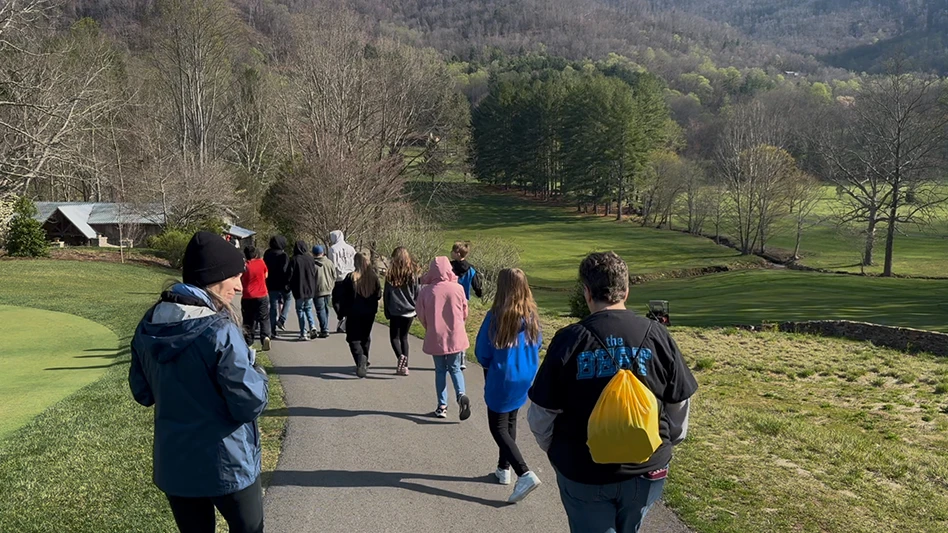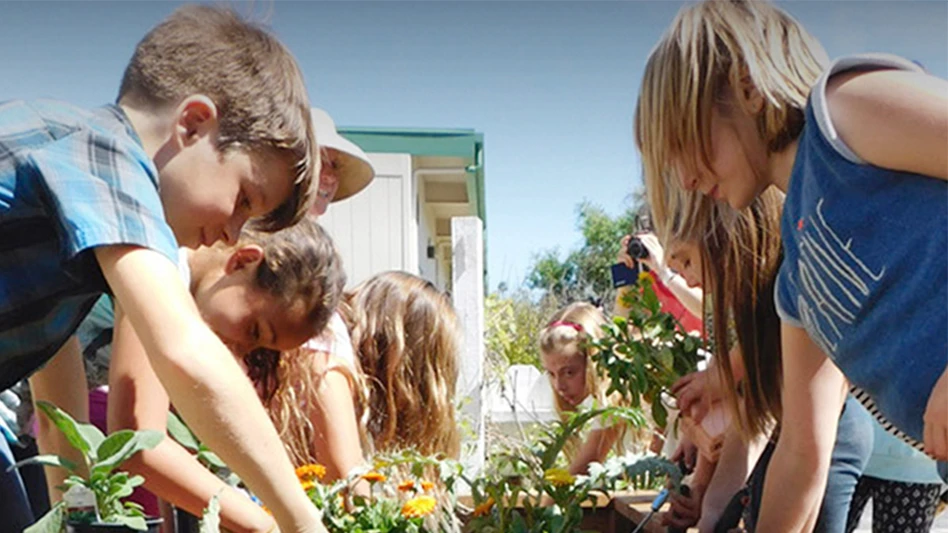


Nutsedge and kyllinga are formidable, adaptable and confounding weeds capable of hurting playability and aesthetics. Their emergence isn’t confined to one geographic region. Control options are limited, although help has arrived.
Let’s cover the basics before introducing the help.
Nutsedge and kyllinga are perennial weeds. They hail from the cyperaceae plant family.
“They are two different species,” says PBI-Gordon Southeast research scientist Dr. Eric Reasor, “but they are managed very similarly.”
Managed
Very
Similarly
The above words offer partial solace for control efforts.
Two primary types of nutsedge are capable of pestering golf course managers: yellow and purple. Yellow nutsedge is more prevalent and found in nearly every region with significant moisture; purple nutsedge is confined to southern states.

An exacta of kyllinga types infiltrates golf courses. Green kyllinga is a southern issue; false green kyllinga is a southern issue that is also becoming a northern problem. “They are both perennial kyllingas,” Reasor says, “but the false green kyllingas are a species that can survive the colder winters.”
The growth habits of nutsedges and kyllingas make them weeds without many peers.
Nutsedges are named for underground tubers called nutlets. “Think of a bulb, like a tulip bulb or daffodil,” Reasor says. “They have underground structures that store food. When you make a herbicide application, it kills off the top growth and then those weeds have stored food in those tubers to regrow from.” Purple nutsedge, Reasor adds, is especially challenging to control because it possesses tubers and rhizomes. Multiple herbicide applications are likely required to extensively thwart purple nutsedge.
If left uncontrolled, nutsedge can form patches where it’s difficult to find and advance golf balls. The weed tolerates low-mowing heights, thus making it a potential issue on greens.
“From a labor to a playability standpoint, it’s important to control nutsedge, especially on greens,” Reasor says. “When you have little tufts of weeds, it’s going to affect the golfers’ perception of ball roll.”
Like nutsedge, kyllinga can tolerate low-mowing heights. Unlike nutsedge, kyllinga can spread via seed dispersion and underground tubers and rhizomes. Kyllinga is a potential issue on every playing surface. The weed’s aesthetics can be deceiving.
“A nice, 100 percent stand of kyllinga, when mowed, doesn’t look half bad,” Reasor says. “It can look like a nice, dense stand of turfgrass. But when you put 150, 200 rounds a day on it … it doesn’t tolerate the traffic. You get bare areas and poor playability.”
Nutsedge and kyllinga begin emerging in mid- to late spring depending on course geography. Soil temperatures consistently in the 60s promote the growth of both weeds. Waiting too long to begin a control program can put a golf course in a precarious summer position.
“We need to target these nutsedges and kyllingas a lot earlier,” Reasor says. “Sometimes people tend to wait until that growth habit of the nutsedge way outgrows the turfgrass. You’re then seeing that growth difference a lot and it’s like, ‘Oh, crap, I have to control this.’ If you wait too long into the summer, you’ve already given that nutsedge and kyllinga more time to grow more rhizome tubers and those things that allow them to survive herbicide applications. When we target earlier in the year, we don’t give it a chance to become as robust of a plant as it is later in the summer.”
Now onto the help …
In response to the nutsedge and kyllinga conundrum facing turf managers, PBI-Gordon recently expanded its selective herbicide portfolio with the launch of Arkon. A liquid formulation, Arkon contains pyrimisulfan as an active ingredient. Pyrimisulfan is the active ingredient in Vexis, a granular herbicide PBI-Gordon launched in 2020.
The development of Arkon stemmed from PBI-Gordon market research and conversations with superintendents indicating the need for a versatile nutsedge and kyllinga liquid control option.
“Sedge has been in that top 10 list of weeds that are troublesome for golf courses and a weed superintendents wished they had a better solution – or at least another option — for,” PBI-Gordon product manager Lyndsie Balstad says. “We’ve been hearing in particular from the East Coast in terms of the growing issues with kyllinga that are popping up from Florida and into New Jersey and parts of Pennsylvania. And it’s starting to spread West. Looking at the industry, we came to an understanding there’s a growing need for this type of solution.”
Arkon is labeled for usage on greens, tees, fairways and rough on warm- and cool-season turfgrasses. The herbicide is available in 1-, 2.5-, 30- and 275-gallon containers with a label rate of 1.2 to 1.7 fluid ounces per 1,000 square feet. No more than 2.5 fluid ounces per 1,000 square feet can be used in a year.
“Arkon is really versatile. It can be used on cool- and warm-season turf, and it’s really unique in the sedge and kyllinga space in that it also has a label for greens,” Balstad says. “That’s important when it comes to the versatility of the product. It can go everywhere.”
The herbicide received EPA approval earlier this year. PBI-Gordon officially launched Arkon in August following a demonstration program. A first for the company, according to Balstad, the demonstration program involved sending one-quart samples of Arkon to 500 turf managers in states where the herbicide had received EPA and state registration. Golf course superintendents were among the turf managers participating in the program.
Reasor and the PBI-Gordon team recommend using Arkon in the early post-growth stages of nutsedge and kyllinga development. The herbicide is designed to treat the weeds simultaneously, and Arkon can be tank mixed with other herbicides and liquid fertilizers. The herbicide works best when mowing is delayed for a day or two following an application. “You want that herbicide to stay on the leaf for as much as possible for it to get into that plant,” Reasor says.
Turfgrass management fundamentals such as creating growing environments with adequate sunlight, boosting drainage, mowing at proper heights, and limiting or dispersing traffic assist the quest to halt nutsedge and kyllinga. But sometimes fundamentals can only partially solve a problem.
“What makes these weeds among the most prevalent in the world is that you can do everything right and you can still deal with this issue,” Reasor says. “The basics would be the best place to start, but you’re still going to have to deal with some nutsedge and kyllinga at some point.”
And there’s one more way to handle the confounding weeds as superintendents prepare for 2024.
“A sedge isn’t exactly a broadleaf weed and it’s not exactly a grass,” Balstad adds. “It fits into this weird spot in terms of weed control. Releasing an active ingredient that’s specifically honed to control these weeds is really exciting.”

Explore the October 2023 Issue
Check out more from this issue and find your next story to read.
Latest from Golf Course Industry
- The Aquatrols Company hires marketing manager
- Renovating Bredemus in West Texas
- Renovation starts at Okatie Creek GC at Sun City Hilton Head
- The Fittest Podcast in Turf: Episode 1
- New 6-hole course debuts in Oklahoma
- GCSAA announces Grassroots Ambassador Leadership Award recipients
- Reel Turf Techs: David Gummo
- PBI-Gordon promotes two to executive level





